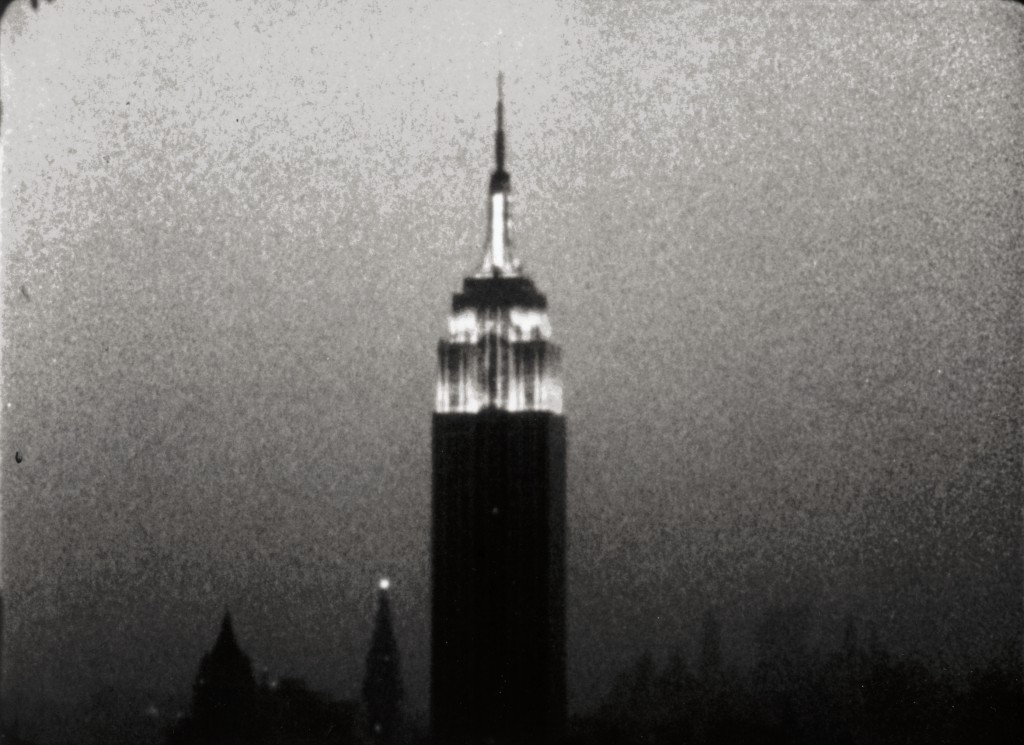
Information
Information
Empire by Andy Warhol (1928–1987) consists of continuous slow-motion footage of the Empire State Building in New York City that documents the passage of time from day to night. The deliberate slowing down of the film to 16 frames per second, its long duration, and the lack of a soundtrack induce a feeling of extreme boredom. Like the blank film in Zen for Film, the Empire State Building in Warhol’s film undergoes minute changes over time: the floodlights on its exterior come on as it grows dark, and the building’s lights flicker on and off over the period of six and a half hours. In the second-to-last reel, the floodlights turn off indefinitely, casting the remainder of the film in darkness. These “chance operations” in the building’s light levels affect the camera’s ability to register light, collapsing illusionistic and experiential realities. George Brecht’s Entrance to Exit and Guy Debord’s Hurlements en Faveur du Sade also utilize a black screen as an expression of materialized nothingness and silence. —LS
©2015 The Andy Warhol Museum, Pittsburgh, PA, a museum of Carnegie Institute. All rights reserved.